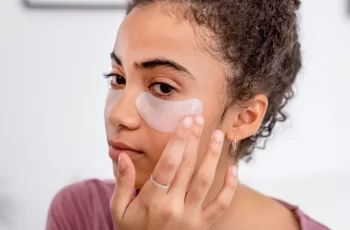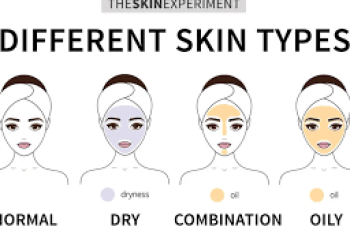
Can Azelaic Acid be used with Sunscreen?
In an industry as crowded as beauty, the chances of certain ingredients being missing are high, which may explain why azelaic acid and its benefits have long flown under the radar. But that doesn’t mean there won’t be benefits from incorporating them into your daily skincare routine.
What is Azelaic Acid? And can we use it with sunscreen? Let’s look at this in a little more detail. Before we dive in, let’s quickly summarize what this unsung hero can do for your skin.
What is Azelaic Acid?
Azelaic acid is an ingredient in skincare that is derived from grains like barley, rye, and wheat. Azelaic acid is known for its stability in formulas and is favored by many people who are prone to conditions like acne and rosacea. This is because it can reduce inflammation and block pigment production, improving the appearance of dark spots and hyperpigmentation.
You’ll find azelaic acid in a variety of concentration percentages, with some containing up to 20% in prescription formulas. Over-the-counter products have much lower percentages, which for many people is the best way to introduce azelaic acid into their skincare routine. Some other benefits of using azelaic acid include:
Contains skin-soothing properties that can reduce signs of redness and sensitivity
Improve skin tone for a more even, clear complexion
Fights skin blemishes and reduces inflammation and redness
Improve skin tone by reducing dark spots, uneven skin tone, and areas of hyperpigmentation
Now that we’ve taken a quick look at azelaic acid and its effects on the skin, let’s take a closer look at how to use it with sunscreen.
Can Azelaic Acid Be Used with Sunscreen?
Yes, you can use azelaic acid with sunscreen because, unlike other acids, it does not increase the skin’s sensitivity to UV radiation. However, it is still highly recommended to apply SPF 30 or above daily. This is because azelaic acid exfoliates the skin, causing new skin cells to be deposited on the surface, becoming more vulnerable to UV rays and the sun’s rays. Over time, this can lead to deeper skin damage, such as dark spots and hyperpigmentation. Fine lines, wrinkles, and loss of elasticity can also appear. You’ll also find that a sunscreen applied daily creates a physical barrier on the skin, ensuring that the active ingredients in other products can remain undisturbed and protected. This means you can reap the benefits without having to worry about further skin damage.
What should not be used with azelaic acid?
For effective skincare, it is recommended not to mix or layer strong ingredients like salicylic acid with other salicylates. This is because the potential for increased skin sensitivity, irritation, dryness, and redness is high.
As for other ingredients, take the popular AHAs, glycolic acid, vitamin C, and even hydrating powerhouses like hyaluronic acid. They have all been shown to work effectively in combination with azelaic acid if used correctly and with enough time between applications to allow the skin’s pH to rebalance.
For more information on what not to use with azelaic acid, see our dedicated blog post.
Should I use azelaic acid before or after my moisturizer?
Azelaic acid works best when applied to the skin after using water-based products. I’m talking about cleansers, face washes, and other products. This is easy if you choose a product that contains azelaic acid (exfoliating toner or serum), both of which are applied to the skin before moisturizer.
A general skincare rule is to apply products in order of thinnest to thickest consistency, starting with your cleanser and ending with your daily SPF sunscreen. This ensures that all ingredients get to work in the right areas of the skin without competing with each other or having to penetrate thicker formulas.
What can you layer azelaic acid on?
There are several ingredients that can be layered with azelaic acid, with the most effective being niacinamide. By combining these powerhouses, you’ll notice all signs of congestion, inflammation, and problem areas. Hyperpigmentation and dark spots are visibly improved. You’ll also find that sebum production is regulated due to the unique benefits of niacinamide, resulting in an anti-acne duo for niacinamide and azelaic acid. Azelaic acid can reduce inflammation and redness, while niacinamide can prevent worsening spots and the formation of new ones.
When should you use azelaic acid in your daily routine?
As I mentioned earlier, this largely depends on the product that azelaic acid is formulated with. However, you’ll find this ingenious acid in products like exfoliating toners, serums, and moisturizers. This means using this ingredient in the later stages of your daily routine. If you have questions about how to use azelaic acid and whether incorporating it into your daily routine will benefit your skin, it’s best to consult a doctor before applying anything to your skin.
Where does azelaic acid go in your daily routine?
This largely depends on the formula that contains azelaic acid. This will help you determine where in your daily routine you need to use azelaic acid. You can often find skin care products like toners, serums, and moisturizers. All of these are used in the later stages of your daily routine after cleansing your skin. Where you use azelaic acid in your daily routine is up to you and what it does to your skin. If you have any questions, don’t forget to consult your doctor or dermatologist to find the best product for you and achieve the best results. Can Azelaic Acid Lighten Your Skin? Yes, azelaic acid can lighten the skin because it targets areas of hyperpigmentation and dark spots. By reducing the darkness of these problem areas, it also improves the overall appearance and texture of the skin. Due to the antioxidant properties of this ingredient, lipid levels in the protective skin barrier are replenished and healthy. This leads to an overall improved complexion. As I mentioned before, azelaic acid exfoliates the skin. Even though it is one of the most versatile ingredients, it is still important to wear a sunscreen of SPF 30 or higher every day to protect the fresh layer of skin from the sun. Here you have some more information about using azelaic acid and sunscreen. Don’t forget to follow us on Instagram for more information.
DQH Knowledge drop: In your 20s, your skin cell turnover decreases. (Cell turnover is a key component in keeping your skin youthful.) You know what else slows down? Your collagen production. Starting in your 20s, collagen decreases by about 1 percent per year. Should you want to prevent fine lines and wrinkles, start by eliminating behaviors that contribute to premature aging. “If it’s bad for you, it’s bad for your skin,” says dermatologist Michel Somenek.
“Cigarette smoking reduces blood flow to the skin and causes premature wrinkling and a dull skin texture. Making the repeated pursed motion to inhale can also cause smoker’s lines. Alcohol and recreational drugs are toxins for the skin that damage its cellular structure and DNA,” Somenek tells us. “The faster you eliminate vices while you are young, the better chance your skin and body have to recuperate.” Also, adopting an anti-aging routine in your 20s is key. After all, the best offense is a good defense. We spoke to Somenek and experts Joshua Ross and Audrey Kunin to find out more.
Keep reading for the best anti-aging products for your 20s, according to skincare professionals.
Sunscreen
“We all know that the sun is the number one cause of skin aging and starting the prevention in your 20s is very important,” Ross says. “The majority of your sun damage won’t start to appear until you’re in your 30s, so don’t wait until you see it surface or you’ll be behind the curve. Stay ahead of it with a good-quality zinc-based sunscreen worn daily.”
Farmacy Green Defense Daily Mineral Sunscreen
An invisible sunscreen with SPF 30, plus botanical extracts meant to protect skin with tons of antioxidants. Bonus: It’s clean and fine to use under makeup.
Bareminerals Complexion Rescue™ Tinted Moisturizer Broad Spectrum SPF 30
Although we recommend you use your SPF and moisturizer separately, we also understand moments when you don’t have time or energy for that extra step. For those times, this bareMinerals moisturizer is a great thing to have on hand.
Vitamin C Serum
“A great introduction to anti-aging is to start with a vitamin C serum in your morning skincare routine,” Ross says. “It’s a powerful antioxidant that will neutralize free radicals and brighten the skin.” He adds that it’s a great way to counteract the effects of the sun’s harmful rays, which, as previously mentioned, are among the biggest causes of premature aging.
Drunk Elephant C-Firma™ Vitamin C Day Serum
The Drunk Elephant C-Firma is a lightweight serum that promises to give skin a glow by combining the brightening powers of vitamin C with ferulic acid, l-ascorbic acid, and vitamin E. The included sodium hyaluronate is meant to replace hydration loss, so you shouldn’t have to deal with any irritation.
Sunday Riley C.E.O. Rapid Flash Brightening Serum
This potent serum is jam-packed with vitamin C (15 percent, to be exact), which means it’s a potential superstar at both brightening skin and dousing it in antioxidants.
Peptides
Using peptides on your skin has many benefits, says Somenek. “The skin barrier is what defends the body against pollution, UV rays, bacteria, and toxins. It can be damaged by several everyday factors. Using topical peptides aids in building a stronger barrier,” he says. “Peptides comprise elastic fibers, which are a type of protein. These fibers help to make skin appear taut and firm. Peptides can also help repair damaged skin, relieve inflammation, and even out skin tone. Some peptides can kill acne-causing bacteria that is common in 20-somethings.”
Kunin agrees, saying, “Peptides are an excellent entry point for supporting collagen.” She recommends looking for face and eye treatments that contain these collagen-boosting powerhouses.
Charlotte Tilbury Magic Eye Rescue Cream
This Charlotte Tilbury super-emollient eye cream has a base of coconut oil and shea butter (read: it’s incredibly hydrating). Botanicals plus peptides are meant to help reduce dark circles and boost collagen, respectively.
This creamy moisturizer serves up potent collagen-boosting peptides and pycnogenol, and antioxidant-rich vitamin C. “Instead of sitting on top of the skin, peptides penetrate the outer layer so they go deep. The ‘signals’ they send tell the cells to produce elastin and collagen, which are needed for youthful-looking skin,” explains Somenek.
At-Home Peel Pads
Remember that skin cell turnover fiasco we talked about earlier? One way to help support it is by exfoliating. “Exfoliation is important to help keep skin fresh and luminous,” Kunin says. She recommends using at-home peel pads as an easy and effective way to exfoliate.
“The goal in your 20s is to fight the slowing pace of cell turnover. It is wise to use products that gently exfoliate, yet still remove oil and other impurities. Products that have Alpha Hydroxy Acids (AHA) or Beta Hydroxy Acids (BHA) are a good choice.”
According to Somenek, you should only exfoliate two to three times a week. “People of all ages are guilty of over-exfoliating and that can be too much of a good thing,” he says.
Dermadoctor Kakadu C Intensive Vitamin C Peel Pad
A few swipes of this Derma Doctor powerful peel pad promise to leave your skin glowing and smooth, thanks to the seven (yes, seven) types of chemical exfoliants, including AHA and BHA. It also contains vitamin C via Kakadu plum extract for added brightening and antioxidant protection.
KEY INGREDIENTS Kakadu plum extract is sourced from the Kakadu plum, a fruit grown in northern Australia. It contains vitamin C, which restores the skin’s natural barrier, increases collagen production, and soothes irritation.
Dr. Dennis Gross Skincare Alpha Beta® Universal Daily Peel Pads
These are the gold standard of peel pads, with a cult following and over 900 five-star reviews on Sephora. They’re easy to use and contain a blend of anti-aging exfoliating acids.
Emollient Night Cream
“In your 20s, you need to start upping the hydration in your skincare routine. You may have been cautious of over-moisturizing because of acne in your teens, but as you enter your 20s, your skin transitions and becomes drier,” Ross says. “I recommend an emollient night cream added into your evening skincare regimen.”
“Twenty-somethings need to make sure that they are not using creams that will clog their pores and cause excess oil production,” says Somenek. Opt for non-comedogenic products.
Cerave Skin Renewing Night Cream
One great choice is the CeraVe Skin Renewing Night Cream, which is a non-comedogenic night cream that leaves skin soft and glowy. It combines the moisturizing powers of ceramides and hyaluronic acid.
RoC Retinol Correxion Max Hydration Creme
“The best night cream ingredients contain retinol, benzoyl peroxide, and/or salicylic acid or hyaluronic acid. The goal is to moisturize, yet remove excess oil,” says Somenek. This Roc Retinol Correxion cream fits the bill as it contains both hyaluronic acid and retinol so it promises to moisturize while also being non-comedogenic.


